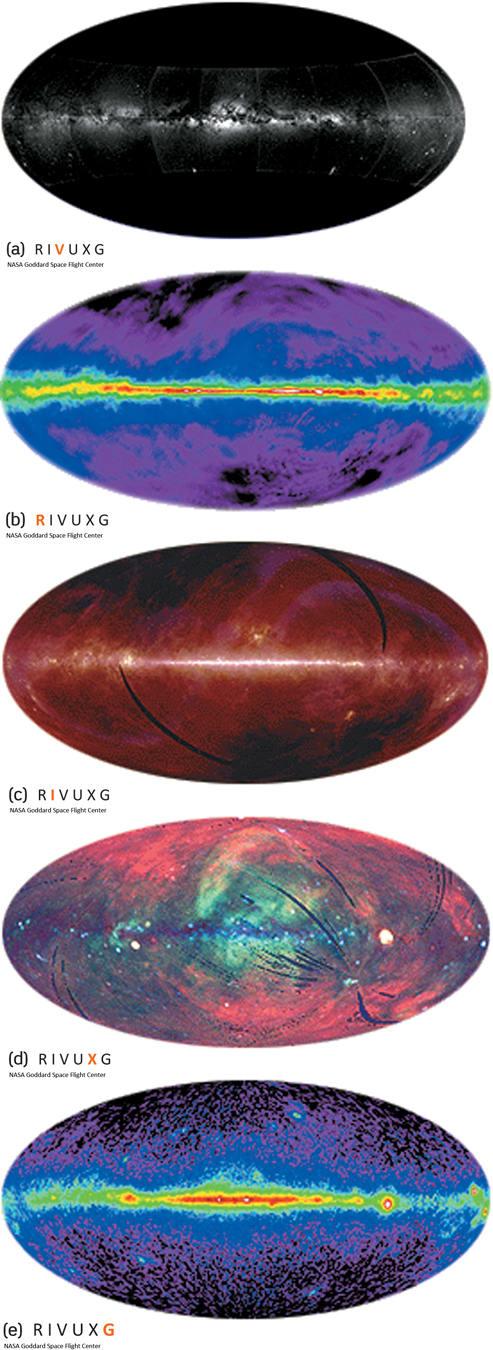
Figure 2-26 The Entire Sky at Five Wavelength Ranges These five views show the entire sky at visible, radio, infrared, X-ray, and gamma-ray wavelengths. The entire celestial sphere is mapped onto an oval, with the Milky Way stretching horizontally across the center. The black crescents in the infrared and X-ray images are where data are missing. (a) In the visible view the constellation Orion is at the right, Sagittarius in the middle, and Cygnus toward the left. Many of the dark areas along the Milky Way are locations where interstellar dust is sufficiently thick to block visible light. (b) The radio view shows the sky at a wavelength of 21 cm. This wavelength is emitted by hydrogen atoms in interstellar space. The brightest regions (shown in red) are in the plane of the Milky Way, where the hydrogen is most concentrated. (c) The infrared view from Infrared Astronomical Satellite (IRAS) shows emission at 100 μm, 60 μm, and 12 μm. Most of the emission is from dust particles in the plane of the Milky Way that have been warmed by starlight. (d) The X-ray view from the ROSAT observatory shows wavelengths of 0.8 nm (blue), 1.7 nm (green), and 5.0 nm (red), corresponding to photon energies of 1500 eV, 750 eV, and 250 eV. Extremely high temperature gas emits these X-rays. The white regions, which emit strongly at all X-ray wavelengths, are remnants of supernovae. (e) The gamma-ray view from the Compton Gamma Ray Observatory includes all wavelengths less than about 1.2 × 10−5nm (photon energies greater than 108 eV). The diffuse light from the Milky Way is emitted when fast-moving subatomic particles collide with the nuclei of atoms in interstellar gas clouds. The bright spots above and below the Milky Way are distant, extremely energetic galaxies.